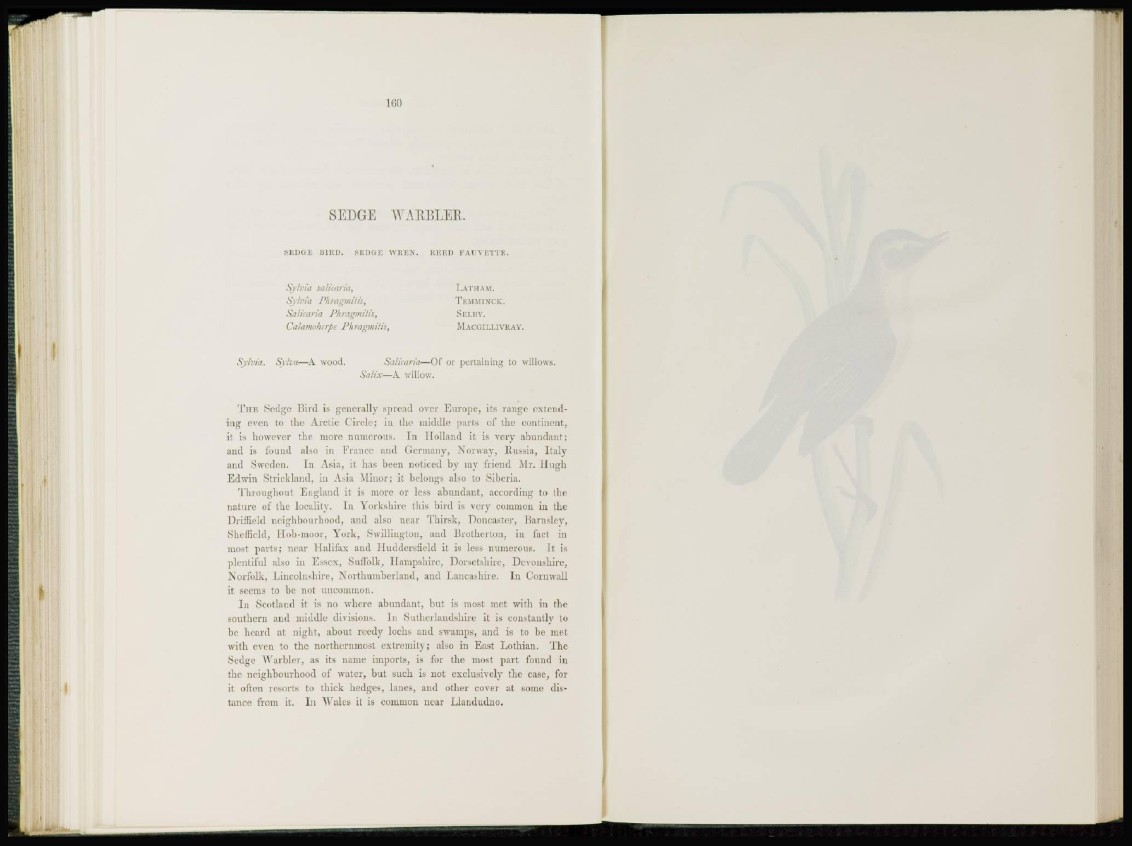
SEDGE WARBLER.
SBDG E BIRD. SEDGE WREN. REED FA I' \ ETTB.
Sylvia salicaria,
S) •!: >ia Ph > agmitis,
Salicaria Pkragmitis,
Calamoherpe Phragmilis,
LATHAM,
t EMMINCK.
SELBY.
MACGILLIVRAY.
Sylvia. Sylva—A wood. Salicaria—Of or pertaining to willows.
Salix—A willow.
'I'll]': Sedge Bird is generally spread over Europe, its range extending
even to the Arctic Circle; in the noddle parts of the continent,
it is however the more numerous. In Holland it. is very abundant;
and is found also in France and Germany, Norway, Russia, Italy
and Sweden. In Asia, it has been noticed by my friend Mr. Hugh
Edwin Strickland, in Asia Minor; it belongs also to Siberia.
Throughout England it is more or less abundant, according to the
nature of the locality. In Yorkshire this bird is very common in the
Driffield neighbourhood, and also near Thirsk, Doncaster, Barnsley,
Sheffield, Hob-moor, York, Swillington, and Brotherton, in fact in
most parts: near Halifax and lluddersiield it is less numerous. It is
plentiful also in Essex, Suffolk, Hampshire, Dorsetshire, Devonshire,
Norfolk, Lincolnshire, Northumberland, and Lancashire. In Cornwall
it seems to be not uncommon.
I n Scotland it is no where abundant, but is most met with in the
southern and middle divisions. In Sutherlandshire it is constantly to
be heard at night, about reedy lochs and swamps, and is to be met
with even to the northernmost extremity; also in East Lothian. The
Sedge Warbler, as its name imports, is for the most part found in
the neighbourhood of water, but siich is not exclusively the case, for
it often resorts to thick hedges, lanes, and other cover at some distance
from it. In Males it is common near Llandudno.